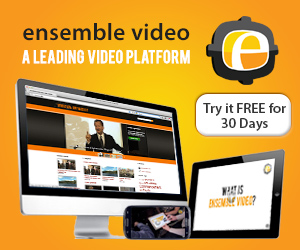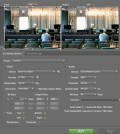All of Your Business Video Management Questions Answered

Video management systems can be complex and complicated to operate, but they don’t have to be. At Ensemble Video, we receive a lot of questions from tech professionals seeking to upgrade how they manage their videos to better streamline their process.
Here are three questions we get asked the most about managing corporate media:
-
What are the main components of a video management platform?
-
What are the different deployment types of video management software?
-
When is it time to upgrade a video management system?
What are the main components of a video management platform?
If you’re considering migrating your media content from a public platform like YouTube or Vimeo to an internal platform, there are a few things to consider. Your video management platform is more than just the place videos or stored. You also have to think about your connected devices, your web and mobile applications and your hosting infrastructure.
Connected devices
Connected devices include your encoders, which are devices or applications that convert your video content into a digital format to stream, and your cameras.
Some encoders are stand-alone devices that take audio and video signal from a camera or a PC. Other encoders are software applications that run on a PC and capture video from a webcam or the computer. Whether you choose to use a hardware or software encoder, an encoder is necessary for making your live streaming content viewable to your audiences.
Web and mobile application
Your video platform should not only be able to stream on a computer, but through an app on a mobile device as well. Ensure your video management platform offers an HTML5 player so it can deliver content to many devices.
Hosting infrastructure
When you use your own video management platform, consider how you’ll deploy your content and what your company’s hosting infrastructure should look like. Below, we discuss these infrastructures in more detail.
What are different deployment types of video management software?
There are three ways to deploy, or share, your content using a video management platform.
On-premise or self-hosted
When your video management platform is self-hosted, all of your media assets are delivered from your own local area network and data center. When a company chooses to self-host, it is typically because they are managing hundreds to tens of thousands of videos for multiple internal departments. Additionally, on-premise hosting is the most secure option for businesses.
Cloud-hosted
A cloud-hosted platform is delivered over the web and provides companies with a SaaS option for managing video content. This option is used by companies that require administrative controls, simple media management features and the robust publishing features, but lack the infrastructure, team or desire to implement the on-premise solution.
Organizations that choose to cloud-host their video management platform typically have many users who are located across multiple offices or other places. Companies can also use cloud-hosting to manage large numbers of videos for internal departments.
Hybrid
In a hybrid-hosted deployment, a company’s media cache servers or servers fetch content on first request from the master server for immediate streaming and stores it temporarily in a cache for subsequent viewers. That master system can be installed in the cloud or on-premise, and the media cache servers are installed in the alternate location (on-premise or cloud). Hybrid-hosted deployment increases the scalability of video-on-demand streaming and gives companies the ability to reach more viewers without clogging their network.
When you’re making a decision about which of these methods of deployment is right for your company, think about:
-
Whether you’re sharing your videos with internal or external audiences.
-
How secure you need your videos to be.
-
Whether you have legal compliance issues to be aware of when hosting your content.
When is it time to upgrade a video management system?
There are a few indicators that mean it’s time for a company to upgrade their system.
You need more security than your current system offers.
Perhaps your company has recently added more confidential media to your video management portal, and that content requires more security or a more-nuanced system. In this instance, we recommend switching to a platform that offers a wider range of security features that meet your needs.
Your “homegrown” internal video management platform can’t keep up with your needs.
Another scenario we often see is that a company cannot keep up with necessary updates to a “homegrown” video platform, or a platform that was developed internally. If this sounds familiar, we recommend updating to a third-party system that continuously updates to keep up with your needs.
Your older platform is no longer supported.
If you’ve been holding onto a platform for so long that it’s no longer compatible with other tools you use, like your CMS or LMS, it’s likely on its way to obsolescence. It’s time to look into other video management platforms to migrate your content to.
Is Ensemble Video right for my company?
Here are some questions we get from people who want to learn more about what we have to offer:
-
Do you support live streaming and can you record live streams?
-
Do you have notifications for new uploads, live streams, shares, and published content?
-
Can you live stream using different encoders and IP Cameras?
-
Do you offer a self-hosted and cloud-hosted version?
-
Do you support Active Directory (LDAP) for user management and viewing security?
-
Can you search inside of video?
-
Does your solution provide personal support and training on-demand?
The answer to all of these questions is a resounding yes.
Ensemble Video is also one of the only video management solutions that offer hybrid deployment to our customers. If you’re interested in learning about whether hybrid hosting is right for your organization, contact us.
And at Ensemble Video, we focus on use cases and users, not just features. We understand that every company is different, so we do everything we can to educate and partner with our customers to ensure they get the most value from their video content management system.
 See how Ensemble Video compares to other video management platforms.
See how Ensemble Video compares to other video management platforms.
Our At-a-Glance Guide walks you through the factors you need to consider when choosing a video platform and shows how Ensemble stacks up to other competitors.










You must be logged in to post a comment Login